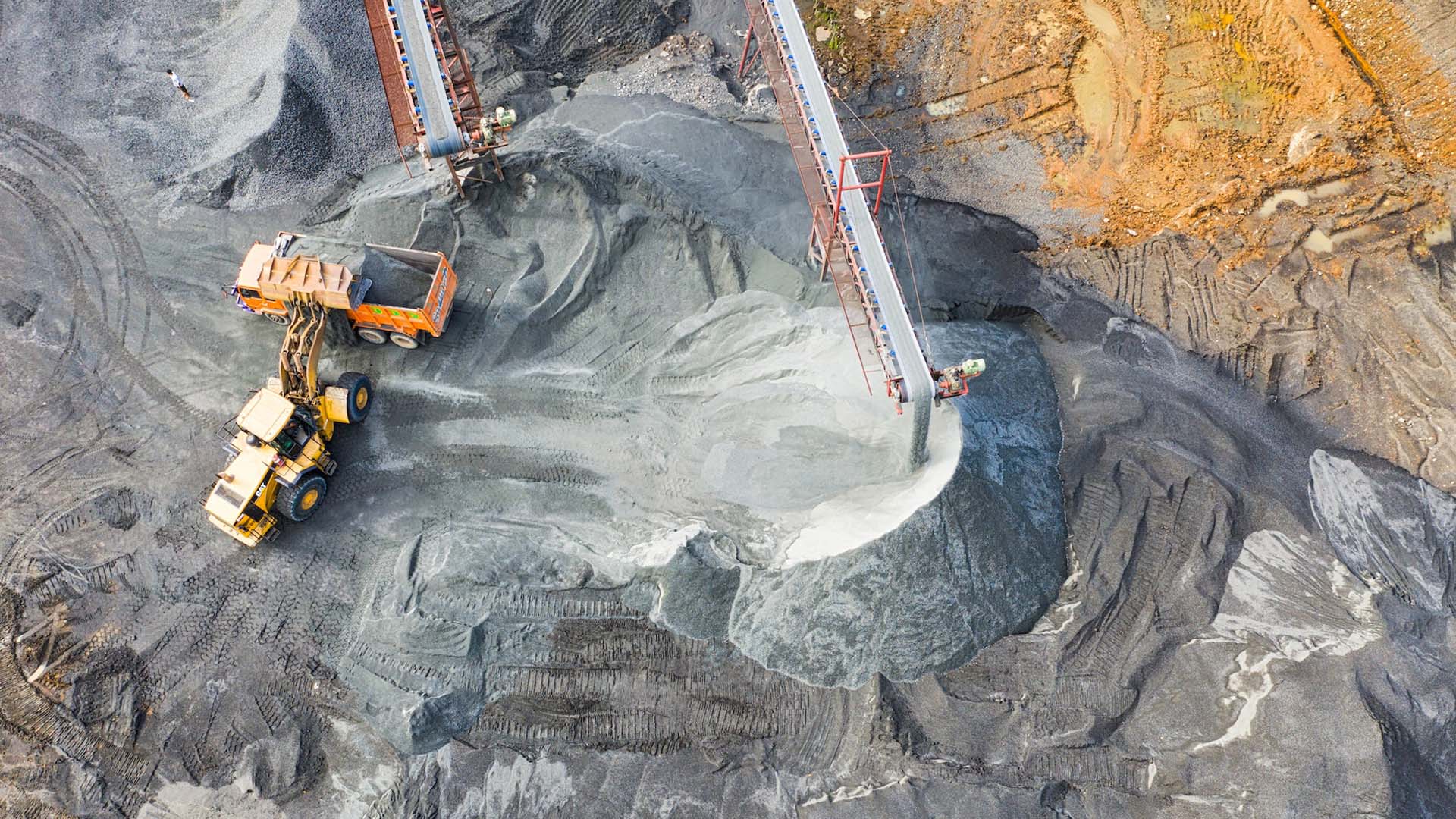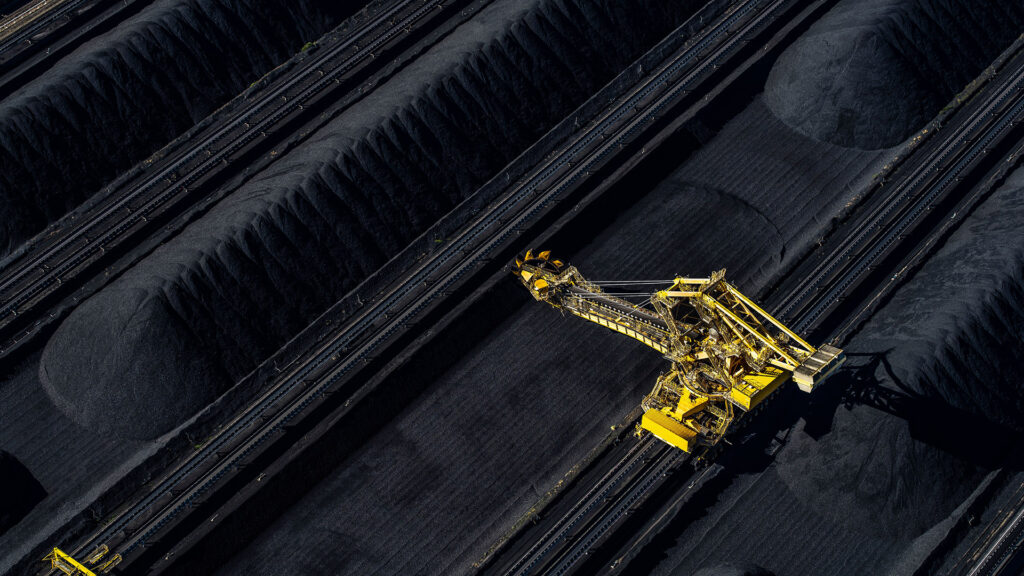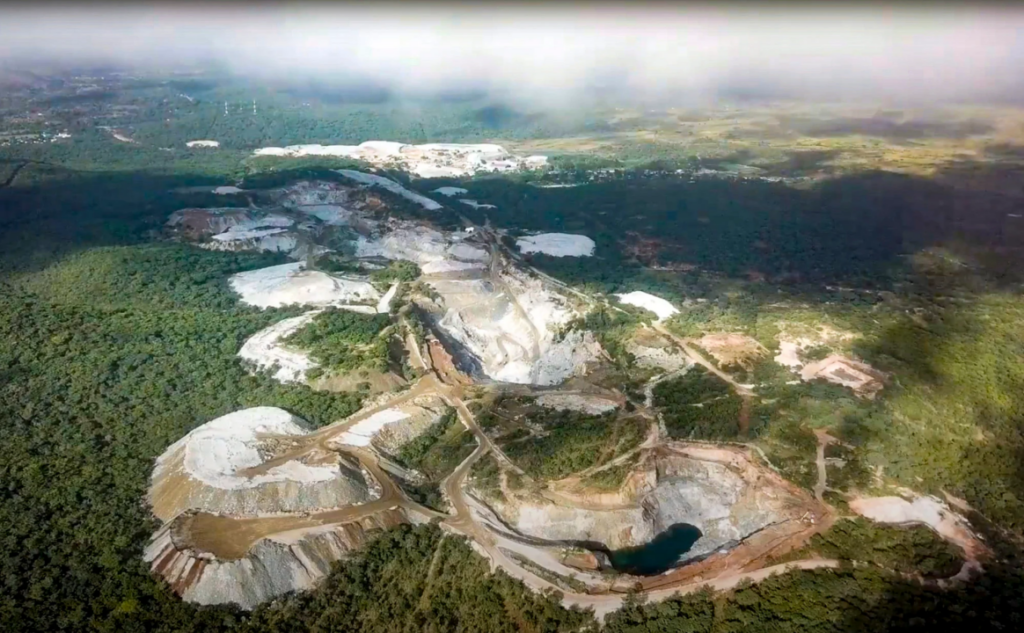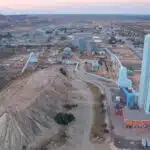Trending: Here are some Business Statistics and Trends to know

The mining industry is an integral part of human life, as miners extract a variety of resources including coal, iron ore, diamonds, platinum, and gold. In the early stages of civilization, basic tools were formed using stones and metals found near the earth’s surface.
Over the years technology has allowed the extraction of maximum ore at deeper depths in underground mines. The demand for these resources is growing exponentially due to their use in various modern-day applications such as energy production, health care products manufacturing and automobile construction. This demand has seen the mining market grow to $2145.15 billion in 2023 from $2022.6 in 2022, at the current estimated compound annual growth rate (CAGR) of 6.7% it is expected to reach 2275.5 billon by 2027.
In this blog, I will walk you through an in-depth understanding of the mining industry , its importance in the economy and how it will shape the future.

What is Mining?
Mining is the process of extracting minerals from the earth’s deposits. The mining industry is a vital component of the global economy. Mining taps into a variety of valuable resources including coal, metals, oil shale, rock salt, potash, gemstones, limestone, clay, chalk and gravel.
By extracting these raw materials from the earth’s surface and/or underground mines, they are made available for use in products such as energy sources or everyday items like construction materials. The process requires the use of labor and equipment – as well as investments in energy to run facilities — for the benefit of equipment maintenance and safety.
In addition to extracting minerals for commercial use, an important part of operating a successful mine is reputational and environmental stewardship– restoring or reclamation activities must also be regularly enacted in order to leave a minimal footprint throughout the course of operations.
Three main processes typically take place at active mining sites:
- Mining (or Mineral extraction): The process of excavating ore from the earth using surface or underground mining methods or techniques.
- Mineral Handling: Involves sorting raw materials from waste materials referred to as tailings.
- Mineral processing: Involves crushing, grinding (or Comminution), separation, smelting or refining or minerals to the final product.
- To achieve all this the mining process starts from prospecting or exploration activities to first determine potential sites for further research which allows for planning & permitting for mining operations and finally extraction of the mineral.
While additional services such as refining and transport may be necessary before entering production markets all-together this work will ultimately help ensure that resources are used wisely with respectful considerations towards our environment where possible.
Here is is how Eagle mining produces nickel and copper.
Importance of Mining Industry
Mining is an essential industry that provides raw materials to a variety of sectors such as automotive, electronics, chemical, pharmaceuticals, construction and many more. It is a major contributor to economic growth in both developed and developing countries. It directly employs millions of people around the world, supports communities and provides the infrastructure for much of the world’s transportation.
Mining also provides us with valuable minerals such as coal, copper, iron ore, diamonds and a variety of other raw materials. It is used to develop products like medicines, fertilizers, plastics and chemicals that are necessary for modern life. Mining is also important in developing new technologies such as renewable energy sources and medicines.
Mining also plays an important role in energy production. For example, coal is the most commonly used fuel for electricity generation and it is extracted from underground mines. It is estimated that over 37% of electricity in the world is generated by coal-fired power plants.
On the top of all this, the mining industry helps to support global food security. Crops grown in areas such as South -East Asia, India and Africa depend on the availability of phosphates and other minerals that are mined from the ground. As you can see the mining industry is a big contributor to the world economy and will continue to be for many years.
In the next section we will look at the lifecycle of a mine.
The Life Cycle of a Mine: From Prospecting to Reclamation
The life of a mine as mention previously is mainly the stages that are involved in the mining process from prospecting for minerals, extraction and end of the life of a mine (reclamation of the mined land) by restoring it to its natural state.
However, the process of establishing a functioning mine involves a complex series of stages, each with its challenges and considerations. In this blog, we will take a detailed journey through the life cycle of a mine, from initial prospecting to final reclamation, while also exploring various types of mining methods.
Types of Mining
Before delving into the life cycle stages of a mine, it’s important to understand the three main types of mining:
- Surface Mining: is a method employed when the mineral deposits are relatively close to the Earth’s surface. It involves the removal of overburden (rock, soil, and vegetation covering the deposit) to access the ore. Surface mining can be further divided into open-pit mining and strip mining.
- Underground Mining: is used when the ore deposits are buried deep within the Earth’s crust. This method involves creating shafts and tunnels to reach the ore, which is then brought to the surface for processing.

- Dredge Mining: The underwater excavation of a placer deposit by floating equipment. Dredging systems are classified as mechanical or hydraulic, depending on the method of material transport.
- Artisanal Mining: refers to small-scale, manual mining activities, usually carried out by individuals or small groups. It often occurs in developing countries and involves rudimentary tools and techniques.
Now, let’s explore the life cycle of a mine in detail:

The Life Cycle of a Mine
Prospecting and Discovery
The first stage in the life cycle of a mine is prospecting. Geologists and exploration teams conduct surveys and geological studies to identify potential mineral deposits.
This involves the examination of surface rocks, soil samples, and various geophysical and geochemical surveys. When promising signs are detected, further exploration takes place to confirm the presence of economically viable minerals.

Prospecting is the process of searching for minerals or precious metals in the field using various tools and techniques. Here are the most common ways of prospecting:
- Metal detecting. This device is primarily utilized for detecting gold, nickel, cobalt, or other ferromagnetic materials that are located up to one meter beneath the surface of the earth.
- Prospecting pickaxe. Pickaxes are commonly utilized for the collection of rock and mineral samples for testing purposes. Magnets are occasionally utilized for detecting small quantities of ferromagnetic ore, such as nickel, cobalt, and iron.
- Electromagnetic prospecting. Airborne gravimeters and magnetometers have the capability to detect minerals located several kilometers below the earth’s surface. Low frequency electromagnetic (EM) waves are also being used to identify orebodies. The sound waves respond differently to different materials and create 3D depictions of what lies beneath the earth’s surface. This method is used for conductive materials like coal.
- Geochemical prospecting. Using this technique, a variety of materials such as gases, water, rocks, plants, and animals are collected and examined for any abnormalities.
After pinpointing an area where the ore is present, the extent and potential value of the orebody will be assessed.
Estimation of Ore Size
Once a potential mineral deposit is discovered, the next step is to estimate the size and quality of the ore body. This is crucial for determining the feasibility and profitability of mining operations. Advanced geological techniques, such as drilling and sampling, are used to assess the ore reserves accurately.
Estimating the size of an orebody is a crucial step for anyone attempting to extract its resources. Calculations are used to determine the grade and volume of the ore, informing whether it is worth investing more time in the project. This can include mineralogy, geology, metallurgy, competitive pricing, potential reserves as well as ongoing operating costs. The quantity and quality of an orebody will offer insight on how profitable future mining operations can be.

Project managers must understand these calculations to make informed data-driven decisions. As such critical assessments must be made regarding any risk factors that could delay or disrupt the eventual exploitation of available resources for economical gain.
Additionally, cost projections must take into account all expenses an excavation operation may incur over time such as loading and transport costs or environmental regulations that must be adhered to before extraction begins. By performing this careful analysis prior to investment many costly mistakes regarding feasibility can be avoided.
Calculating Economical Feasibility of the Ore Body
After estimating the ore size, economic feasibility studies are conducted to evaluate the profitability of mining the deposit. Factors like commodity prices, production costs, infrastructure requirements, and potential environmental impacts are considered during this stage.
Calculating the economical feasibility of a project is critical for any mining company’s decision making. The amount of economically recoverable ore will provide an initial indication of the project’s viability. If the ore deposit is too difficult or expensive to recover, then the project may be deemed economically unfeasible before other factors are even considered.

After assessing the amount and characteristics of ore recoverable, production, processing and purification can be calculated. These costs are also highly influential in determining overall economic feasibility. Beyond that, marketability and return on investment must be evaluated to determine whether or not a mine will generate adequate profits given all associated costs.
Engineering implications should also be taken into account when considering a project. Factors like land use and waste management systems need to be well-established before mineral extraction can begin safely. Altogether, numerous elements come into play when calculating the economic feasibility of establishing a new mine – mining companies should always ensure that their decisions are based on thorough deliberation and analysis.
If the project appears to be economically viable, it proceeds to the development phase.
Mine Development
During the development phase, the necessary infrastructure and facilities are constructed to support mining operations. This includes building access roads, establishing power supply lines, setting up the processing plant, and creating living quarters for the workforce.
Mine development is a crucial step in the process of mining orebodies and extracting useful resources from the earth’s surface. The process begins with exploration, where a mining company seeks to find deposits of useful ores before setting up infrastructure for extraction.
Once a mining company has determined an orebody is worth recovering, mine processing plants and other buildings must be constructed, along with the acquisition of necessary equipment and supplies that will be used to extract materials. This phase also encompasses all other activities associated with readying a mine for operation including environmental assessments as well as plans to ensure work safety and compliance with relevant regulations.

The goal of this stage is to prepare the mine in such a way that it can start producing economically viable amounts of material as soon as possible. This is often achieved by minimizing downtime during production startup by ensuring there is sufficient equipment ready for use at any given time.
Depending on the complexity of the deposit, developing a mine in such a way can take months or even years, eventually leading to successful production once all operations are finalized. The life cycle of a mine will continue until it becomes economically unfeasible or unsafe to operate, which signals its closure until it can reopen again if operations become viable once more in the future.
Overburden Removal
In surface mining, once the site is ready for operation, overburden removal begins. Large-scale excavation equipment is used to strip away the layers of soil, rock, and vegetation covering the ore. This process exposes the mineral deposit, allowing for its extraction.
This refers to the process of removing the rock and soil lying above the ore for easier access. The method for removal will depend on the type of deposit as well as local considerations. For example, some overburden may be fractured and so require a different approach than uniform overburden.

Often, the overburden removed from sites of mineral extraction can be stored onsite or backfilled into mines once they’ve been depleted of minerals. Careful planning is needed when it comes to handling this waste, both in terms of timing and in deciding which storage location is most suitable.
This should take into account safety, environmental concerns, aesthetics, odor potential, traffic impact, surface water run off considerations and cost effectiveness when weighing certain disposal options.
Waste Management
As mining progresses, waste material known as tailings is generated. Tailings can include non-valuable rock, processing chemicals, and other by-products. Proper waste management is essential to minimize environmental impacts. Tailings dams and containment areas are constructed to safely store and manage these materials.
These can range from both harmless and toxic compounds and must be stored in secure containment systems, such as artificial ponds or dams that are designed to keep the waste materials away from public water sources.

Unfortunately, these systems are not foolproof, and environmental disasters have occurred due to breaches of these holding locations. Recent cases have included large dams collapsing during heavy rainstorms or saline wastewater leaking into natural lakes. In poorer countries with fewer established safeguards in place, tailings can even be dumped directly into oceans with devastating effects on local marine life.
Careful planning needs to go into managing mine waste effectively. Companies should guarantee safety precautions are taken when disposing or storing tailings, while governments must take decisive action to ensure that appropriate policies and regulations are implemented for proper oversight. Otherwise, future generations may find themselves facing the nightmare scenario of dealing with hazardous mine runoff and dangerous health concerns all too soon after our own time.
Mineral Processing
After the ore is extracted, it undergoes various mineral processing techniques to separate the valuable minerals from the gangue (unwanted material). Processes like crushing, grinding, gravity separation, flotation, and smelting are employed to extract and refine the desired minerals.
Mineral processing is a vital part of the mining process, and involves the use of specific methods to extract valuable materials from the surrounding waste material. First, ore is broken down into smaller pieces through crushing and grinding. Then, these fragments are sent through washing systems to separate out any remaining contaminants. Finally, these mineral particles are divided into marketable forms such as metals or concentrates by techniques like smelting and electrolytic reduction.

The purpose of mineral processing is to make useful resources out of ore and increase its value before it enters the market. This is an essential step in many fields to obtain useful products from raw minerals, for use in industry or trade.
By carefully refining different types of ore into their preferred components, companies can maximize the benefit from each resource they process. Mineral processing is also important in recycling operations where old metals may be reused for new purposes after being subjected to specific processes such as smelting or re-extracting rare elements from scrap materials.
Reclamation
The final stage of a mine’s life cycle is reclamation. Once mining activities are complete, the site is rehabilitated to minimize its environmental footprint. This involves restoring the land, replanting vegetation, and implementing erosion control measures. Reclamation aims to return the area as close as possible to its original state or repurpose it for sustainable land use.
Reclamation is the process of restoring a landmass or environment that has been impacted by human activity, specifically mining. It is the final stage of a mine’s life cycle, and is essential for returning mined land back to its natural state. Reclamation begins when a mine becomes too costly to operate, or no longer economically feasible. In modern mining, reclamation must be done before even beginning planning for opening the mine. No permit will be given without an adequate plan for restoring the land afterwards.
When old mines are taken care of during reclamation processes, they can become areas for new economic opportunities and environmental conservation. This often includes planting forests to absorb heavy metal pollutants from leeching away into groundwater sources, or creating public works centres for community activities and employment.
Reclamation also involves addressing the cultural implications that come with changes in local living circumstances due to changes in terrain or landscape. This requires very attentive negotiations between local communities and the government prior to taking on any projects. Ultimately, successful reclamation processes not only restore an environment but also provide a sense of sustainability by fostering beneficial relationships with native inhabitants and nature itself.
The life cycle of a mine is a multifaceted process that involves careful planning, exploration, and execution. From prospecting and discovery to reclamation, each stage requires meticulous attention to detail and adherence to environmental and safety standards. By understanding and responsibly managing the life cycle of mines, we can ensure a sustainable and responsible mining industry that meets the world’s resource demands while safeguarding the environment.
Mining Industry Equipment
The mining industry is a complex world of equipment and tools, essential for the excvation and extraction of ore and minerals from deep within the ground. The largest land equipment available, dragline excavators and dozers, are used to move overburden away from mine sites and make way for workers to get in and access resources.
Powerful drills are used to create holes that are filled with explosives to further break apart rocks; loaders and haulers play an important role in getting ore from the mine site to processing plants.
To further separate ore from waste products, hoppers and trommels are employed. In addition, elevator shafts are constructed to transport personnel down into the depths of mines as well as lift products up towards processing plants at the surface.
There are also many railways that span across different areas of a mine in order to move materials between sites more efficiently. Furthermore, many autonomous machines such as loaders or continuous miners operate without needing human oversight – reducing costs while increasing productivity.
Massive dump trucks and cranes also form an indispensable part of mining operations by carrying huge quantities of ore as well as overburden in open cast surface mining scenarios. These machines help ensure that valuable resources can be recovered swiftly even under challenging geological conditions.
Mining Industry Safety
The mining industry is an important economic sector for many countries around the world, but it involves significant safety risks. The complexity of large-scale mines, combined with exposure to hazardous materials and seismic activity make safety a paramount concern. To address this, several organizations in the United States have taken action to improve safety in the mining industry.
The National Occupational Research Agenda (NORA) has designated the mining industry as a priority for intervention strategies to ensure miner safety and environmental health. This initiative has included research into safe practices used by the industry.
Furthermore, in 1978, The Mining Safety and Health Administration (MSHA) was created in order to increase worker safety in mining workplaces. MSHA provides guidelines for miners and allows them to report hazardous conditions they may encounter onsite.
Miners can also take initiatives regarding preventing accidents such as mapping out detailed escape routes, being familiar with evacuation procedures after any kind of hazard or emergency situation arises and most importantly using personal protective equipment while at work sites. Although accidents still occur due to negligence and other reasons, mines are steadily getting safer thanks to improved industry regulation.
Environmental Impacts of the Mining Industry
Mining operations, especially ones that utilize open pit methods, are extremely destructive to the environment. They destroy rivers, forests, and habitats as well as damage sensitive ecosystems. This happens through deforestation during the process of excavating minerals from within the earth’s crust.
To facilitate mining activities in forested regions, large patches of vegetation are cleared from around the mine which ultimately leads to a massive loss of biodiversity. Additionally, mining activities can often lead to soil and groundwater contamination due to chemical runoff or fugitive dust particles from tailings piles settling into nearby waterways. As a result, water sources within communities experience serious pollution issues that contribute to human health risks and fish mortality rates.
Lastly, when a mine closes it creates an utterly abandoned wasteland that not only threatens wildlife pathways but also prevents people from safely accessing their natural resources. This often forces members of rural communities to move into more urban areas where they must find new employment opportunities or risk losing out on basic needs such as healthcare or education for their children.
Therefore, it is essential for mining companies and governments alike to consider ways in which severe environmental impacts can be minimized before engaging in any form of mineral extraction operations to ensure a sustainable future for their citizens.
Mining Industry Regulations
Mining industry regulations have proven to create a safer working environment for miners, improve the impacts on the environment, lessen local human rights violations, and reduce the number of resource conflicts.
Mining industry regulations are an essential step in the management of mining activities. Regulations help to create a safer work environment, reduce environmental impact, address human rights issues, and prevent resource conflicts.
The implementation of stringent regulations begins with strict safety guidelines in order to ensure that workers are kept safe from harm while working in hazardous environments.
This can include protective equipment requirements, testing for air quality and noise pollution exposure levels within the operation, and detailed operational protocols for the use of heavy machinery and chemicals. Compliance with these regulations is monitored by both governmental agencies and independent agencies to ensure that no corners are cut when it comes to worker safety.
In addition to providing safeguards for workers, regulations are also instrumental in mitigating negative impacts on the environment. Regulations set limits on water consumption, air pollution output, land use/degradation effects, waste storage practices, as well as initiatives that protect local biodiversity areas from disruption or destruction.
Before any development project can begin, a detailed assessment of environmental impacts must be performed which involves an extensive review of potential risks associated with each component of the project and appropriate mitigation strategies must be employed if necessary.
Collective consent from local communities is also prioritized through adequate consultation processes where sustainable resource management plans may.
Environmental Regulations
Mining regulations related to the environment have evolved significantly over the past few decades. These regulations aim to protect human health and minimize the environmental impacts of mining activities.
The Environmental Impact Assessment (EIA) process is a key part of determining if a mine should be developed safely, and also involves initial investigations into baseline data on wetlands, vegetation, wildlife habitats, and water bodies surrounding the proposed mining site.
Assessing environmental risks created by mining operations is an important part of doing business that mined materials are extracted as safely and sustainably as possible.
The mine closure planning requires some form of rehabilitation plan for how the land left after operations will be remediated or used in a new beneficial way. This could include re-vegetating disturbed areas, restoring topsoil or creating new wildlife habitat through planting native species of plants.
Environmental monitoring during and after operations allow monitoring programs to take place throughout the life cycle of a mining project, identifying any potential issues before they become too serious to tackle.
Community Regulations
The mining industry has experienced an incredible surge in growth over the past few decades and is one of the largest industries today. Unfortunately, the local communities living in mineral-rich regions are seeing a disproportionately small portion of the benefits of this industry.
To remedy this, non-governmental organizations (NGOs), alongside local communities, have called for new regulations that ensure fair revenue management and full transparency when it comes to who’s benefitting from mining activities and how they benefit.
These newly adopted regulations now also consider issues like resettlement, community development, and environmental impact into account when international banks consider lending money to mining companies. For example, the Extractive Industries Transparency Initiative (EITI) requires disclosure of information regarding how exactly different levels of government benefit from natural resource management taxes, creating transparency and accuracy across all parties involved.
Joining EITI is voluntary but currently 56 countries have adopted its standards showing a general acceptance amongst governments as well as promoting accountability within the industry itself.
Challenges with the Implementation of Standards
Implementing standards in the mining industry has long been a challenge. Although the Extractive Industries Transparency Initiative (EITI) was created to provide international standards for financial transparency and responsible management of natural resources, there are still several major issues that have yet to be solved.
For example, EITI has not decided whether or not to include artisanal mining which is practiced in about half of its compliant countries. Furthermore, there is no consensus on how to handle non-cash payments from mining companies to national, local, and state governments. Moreover, EITI does not account for the inequality between what mining companies understand about the industry versus what local communities know when it comes to negotiations with respective parties.
Problems with implementing standards are further compounded by the lack of consulting between local communities and mining companies due to inadequate resources or awareness.
This fundamentally affects any potential agreements resulting from negotiations because locals’ concerns may not be taken into proper consideration as they may be seen as simply inconvenience rather than key social and political elements of each region’s development trajectory.
Aside from understanding everyone involved’s respective interests in a situation it is also essential that an increasing number of people in positions of privilege become aware on an international level that these disparities exist.





